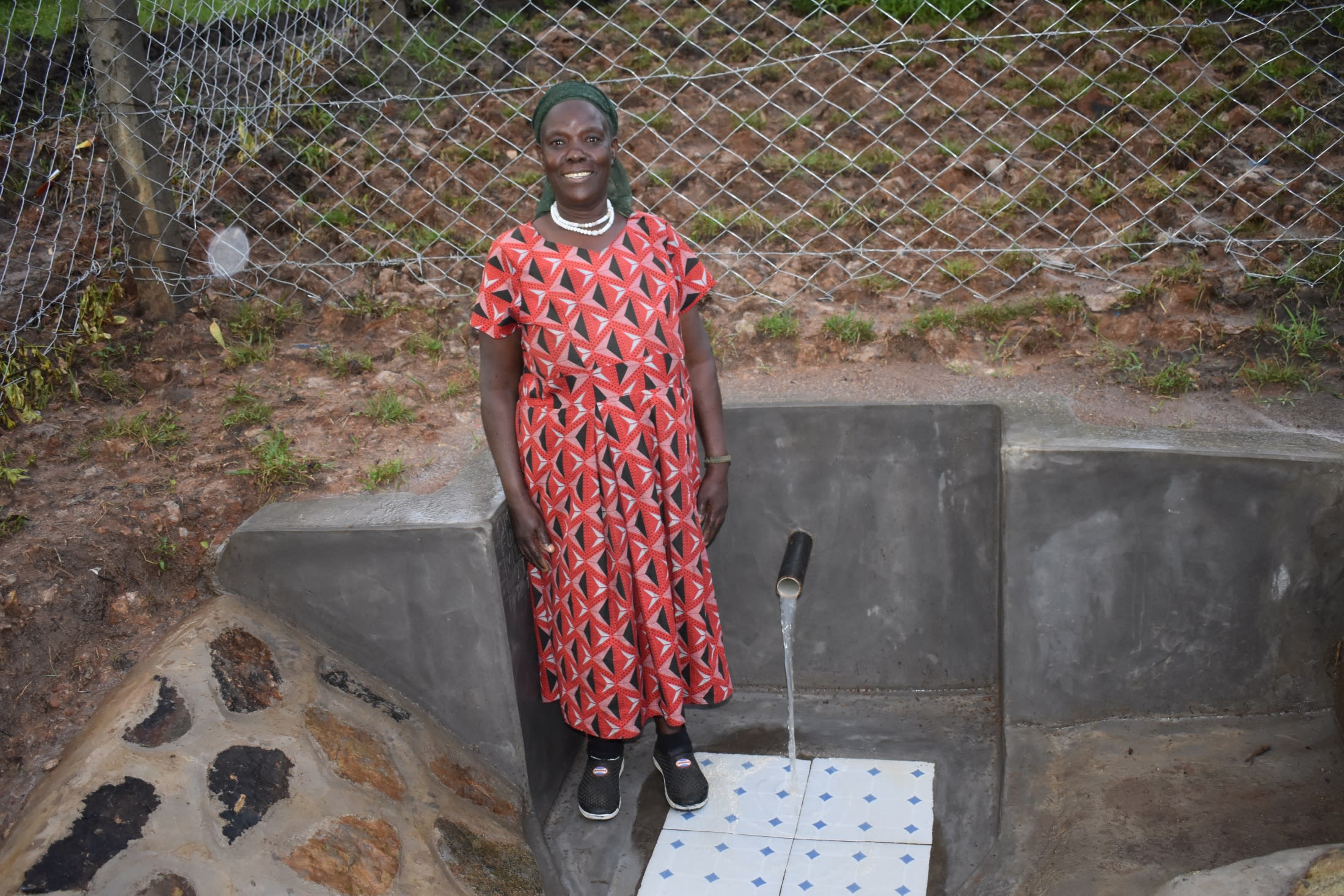Omurayi Spring is the primary water source for the 105 people living in the community of Shikumulo, but the seasonal, unprotected spring has several challenges.

To gain access, people must climb down a slippery, muddy, grassy bank into a rocky pool of water and then attempt to climb back out with heavy, full water containers. It is difficult for young and old alike.
"Accessing water from this water source is a challenge during [the] rainy season because it becomes slippery, and also, it's very dangerous to me and other small children, for its access is not good," said six-year-old Kevin O., shown below collecting water.

The water fed through the improvised collection pipe sticks out of a muddy bank covered with algae, and by no means can the water be considered safe for people to consume.
"This water source is unprotected. It's open to all [types of] contamination, leading to cases of water-related problems such as cholera and amoeba. This has been a major challenge to the community members," our field officer Elvine said.
The spring also produces a low quantity of water, so collecting sufficient water for those dependent on it is painfully time-consuming.

"I find it [a] hard task to get water because fetching from this water point becomes a challenge sometimes due to [our] large population. We start fetching water from around 4:00 am, and because we are many, you may find yourself at around 8:00 am still waiting for your turn. This affects my plans for the day, and because water is life, I must make sure that I have stored it before doing any other thing," said 60-year-old farmer Cerilla Musenya, above in orange, waiting her turn to collect water.
The long wait leads to community members growing frustrated, both with one another, disrupting the community's unity, and because they are unable to accomplish other critical daily tasks due to the time wasted waiting for water.
The people of Shikumulo need an accessible, free-flowing water source that will provide them with plenty of safe water to meet their daily water needs. Then hopefully, they will be able to accomplish their essential tasks, and the unity of the community can be restored.
What We Can Do:
Spring Protection
Protecting the spring will help provide access to cleaner and safer water and reduce the time people have to spend to fetch it. Construction will keep surface runoff and other contaminants out of the water. With the community's high involvement in the process, there should be a good sense of responsibility and ownership for the new clean water source.
Fetching water is a task predominantly carried out by women and young girls. Protecting the spring and offering training and support will, therefore, help empower the female members of the community by freeing up more of their time and energy to engage and invest in income-generating activities and their education.
Training on Health, Hygiene, COVID-19, and More
To hold training, we work closely with both community leaders and the local government to approve small groups to attend training. We ask community leaders to invite a select yet representative group of people to attend training who will then act as ambassadors to the rest of the community to share what they learn.
The training will focus on improved hygiene, health, and sanitation habits in this community. We will also have a dedicated session on COVID-19 symptoms, transmission routes, and prevention best practices.
With the community's input, we will identify key leverage points where they can alter their practices at the personal, household, and community levels to affect change. This training will help to ensure participants have the knowledge they need about healthy practices and their importance to make the most of their water point as soon as water is flowing.
Our team of facilitators will use a variety of methods to train community members. Some of these methods include participatory hygiene and sanitation transformation, asset-based community development, group discussions, handouts, and demonstrations at the spring.
One of the most important issues we plan to cover is the handling, storage, and treatment of water. Having a clean water source will be extremely helpful, but it is useless if water gets contaminated by the time it is consumed. We and the community strongly believe that all of these components will work together to improve living standards here, which will help to unlock the potential for these community members to live better, healthier lives.
We will then conduct a small series of follow-up trainings before transitioning to our regularly scheduled support visits throughout the year.
Training will result in the formation of a water user committee, elected by their peers, that will oversee the operations and maintenance of the spring. The committee will enforce proper behavior around the spring and delegate tasks that will help preserve the site, such as building a fence and digging proper drainage channels. The fence will keep out destructive animals and unwanted waste, and the drainage will keep the area's mosquito population at a minimum.





 Protected Spring
Protected Spring
 Rehabilitation Project
Rehabilitation Project




































